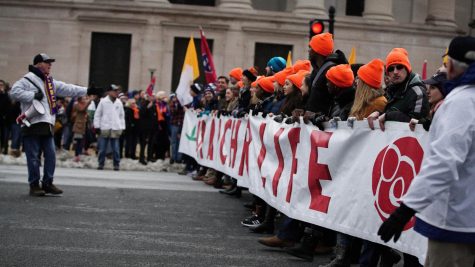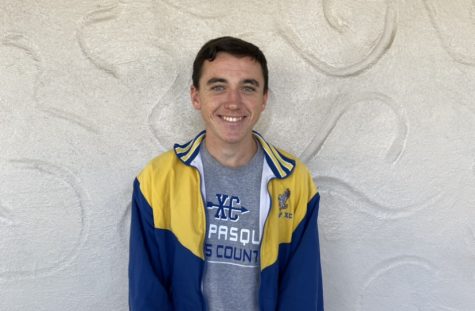Pro-Life Marches Occurring on National and Local Stages
Each year since abortion became legal in all 50 states as a result of the Supreme Court’s ruling in the cases of Doe v. Bolton and Roe v. Wade, the National March for Life has drawn activists from across the country in support of the pro-life cause. The initial march was held in Washington, D.C. on Jan. 22, 1974 as a way of appealing to Congress to pass anti-abortion legislation. President Donald Trump’s presence at this year’s March for Life on Friday, Jan. 24 marked the first time a president has ever attended the march in its 47-year history.

February 20, 2020

Each year since abortion became legal in all 50 states as a result of the Supreme Court’s ruling in the cases of Doe v. Bolton and Roe v. Wade, the National March for Life has drawn activists from across the country in support of the pro-life cause. The initial march was held in Washington, D.C. on Jan. 22, 1974 as a way of appealing to Congress to pass anti-abortion legislation. President Donald Trump’s presence at this year’s March for Life on Friday, Jan. 24 marked the first time a president has ever attended the march in its 47-year history.
The March for Life Education and Defense Fund, which organizes the event annually, sees this march as a powerful means through which pro-life activists can renew their commitment to defend human life.
“It is an opportunity to recall why we stand for life and then to go home and continue to defend human life in our communities,” the March for Life Education and Defense Fund’s website said.
The march’s mission is to promote the sanctity of human life from conception until natural death.
“We march because we envision a future world where the beauty and dignity of every human life are valued and protected,” the website said.
This year’s theme for the march was “Life Empowers: Pro-Life is Pro-Woman.” Advocates want to spread the message that choosing life is empowering for women and their families and that it contributes towards their liberation.
“Courageous suffragists like Susan B. Anthony and Elizabeth Cady Stanton who fought for women’s right to vote, also opposed abortion,” said president of March for Life Jeanne Mancini on the March for Life website. “Pro-lifers should be inspired by the early suffragists who understood the true dignity of women, and that every person, born and unborn, deserves equal rights and protection under the law.”
During his remarks, President Trump encouraged the many high school and college students who were in attendance.
“Young people are the heart of the March for Life, and it is your generation that is making America the pro-life, pro-family nation,” said President Trump in an article from the Washington Examiner.
In addition to the march, the organization hosted a youth rally, conference, exposition, and dinner.
On a local level, San Diego and Los Angeles held their own pro-life demonstrations on Jan. 18. San Diego held its 8th annual Walk for Life in Balboa Park, while Los Angeles had its 6th annual OneLife LA march. Both events were organized by the Roman Catholic Diocesan Office of Life, Justice, and Peace for the respective cities.
The theme of this year’s walk in San Diego was “Live, Serve, and Embrace Life.”
“For all of us gathered here today, today our mission and our purpose is to be testifying to the beauty and the gift of life, and the importance of defending it within our society,” said San Diego Bishop Robert McElroy in an article from the San Diego Union-Tribune.
During Los Angeles’ OneLife LA opening rally, Archbishop Jose H. Gomez stressed the universality of the pro-life message and how it extends to those outside the womb.
“Love is the reason for our lives, and love is the reason we commit ourselves to defending the child in the womb, the poor and the homeless, the prisoner and the sick, the elderly and the disabled, mothers in crisis and young people in need of foster care,” said Gomez in an article from the Los Angeles Daily News.


